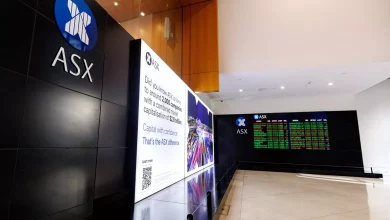
Strategic Insights: Advanced Stock Investing Techniques for Norwegian Traders
Investing in the Norwegian stock market presents unique opportunities and challenges for traders. To navigate this landscape effectively, it is essential to employ advanced investing techniques tailored to the specific characteristics of the market. This article explores high-level strategies that Norwegian traders can use to maximize returns and manage risks effectively.
Understanding the Norwegian Stock Market
The Norwegian stock market, primarily represented by the Oslo Stock Exchange (OSE), is known for its strong focus on sectors like energy, shipping, and technology. The OSE is a major player in the Nordic region, attracting both domestic and international investors. Understanding the market’s composition and behavior is crucial for developing effective investing strategies.
Economic Factors
Norway’s economy significantly influences its stock market. Key indicators such as GDP growth, oil prices, and currency exchange rates play a pivotal role in stock performance. Norway’s wealth from oil and gas reserves means that fluctuations in global oil prices can have a substantial impact on the market. Additionally, economic policies, interest rates, and inflation rates are essential factors to monitor.
Regulatory Environment
The Norwegian financial market is well-regulated, providing a secure environment for investors. The Financial Supervisory Authority of Norway (Finanstilsynet) oversees market activities, ensuring transparency and protecting investor interests. Understanding these regulations and their implications on trading strategies is vital for success in this market.
Advanced Investing Strategies
Technical analysis relies heavily on identifying and interpreting chart patterns. Common patterns such as head and shoulders, double tops and bottoms, and triangles can signal potential market movements. In the context of Norwegian stocks, recognizing these patterns can help traders anticipate price changes and make informed decisions.
Advanced technical indicators like the Moving Average Convergence Divergence (MACD), Relative Strength Index (RSI), and Fibonacci retracement are valuable tools for Norwegian traders. For instance, using the MACD to identify bullish or bearish trends can inform entry and exit points in stocks like Equinor or DNB. The RSI can help determine overbought or oversold conditions, providing signals for potential reversals.
Fundamental Analysis
A thorough analysis of company financials is essential for making informed investment decisions. Key metrics such as earnings per share (EPS), price-to-earnings (P/E) ratio, and return on equity (ROE) offer insights into a company’s performance and potential. Evaluating Norwegian companies involves examining their financial health, market position, and growth prospects, particularly in the context of global energy and technology trends.
Identifying high-potential sectors within Norway can significantly enhance investment strategies. The energy sector, particularly oil and gas, has historically been a cornerstone of the Norwegian economy. However, sectors like renewable energy and technology are also showing strong growth and innovation. Analyzing sector performance, government policies, and global market trends can help traders identify opportunities for potential returns.
Quantitative Trading
Algorithmic trading uses computer algorithms to execute trades based on predefined criteria. This method can improve efficiency and remove emotional bias from trading decisions. Developing and testing algorithms tailored to the Norwegian market can be facilitated through brokers like Saxo Bank, which provide robust infrastructure for quantitative trading.
Statistical arbitrage involves exploiting pricing inefficiencies between related stocks. By identifying pairs of stocks that typically move together but have temporarily diverged, traders can buy the underperforming stock and short the outperforming one. This strategy requires sophisticated statistical models and a deep understanding of market dynamics.
Risk Management Techniques
Diversification is a fundamental risk management strategy. By spreading investments across various asset classes, sectors, and geographies, traders can reduce exposure to any single market risk. In Norway, diversifying between stable sectors like energy and emerging sectors like technology can balance potential returns and risks. Investing in already-diversified assets such as ETFs and mutual funds can also provide benefits.
Hedging involves using financial instruments to offset potential losses in other investments. Options and futures are common hedging tools. For example, a trader holding a significant position in a Norwegian energy company might use futures contracts to hedge against fluctuations in oil prices. Understanding the mechanics and costs of hedging is crucial for effective risk management.
Leveraging Technology and Tools
Advanced trading platforms are essential for executing high-level strategies. Platforms such as Nordnet, Saxo Bank, and Pareto Securities offer sophisticated tools for analyzing market data, executing trades, and managing portfolios. Features like real-time data feeds, customizable dashboards, and advanced charting tools provide traders with the resources needed to stay competitive.
In-depth market analysis requires powerful analytical tools. Financial news websites, market data platforms, and specialized software can help traders monitor trends and make data-driven decisions.
Behavioral Finance and Market Psychology
Market sentiment reflects the overall attitude of investors towards a particular security or market. Understanding sentiment is crucial for anticipating market movements. Tools like sentiment analysis algorithms can gauge public sentiment by analyzing news articles, social media posts, and other data sources. In Norway, monitoring sentiment around key sectors like energy and technology can provide early indications of market shifts.
Cognitive biases can significantly impact trading decisions. Common biases include overconfidence, confirmation bias, and loss aversion. Recognizing and mitigating these biases is essential for making rational investment decisions. Techniques such as keeping a trading journal, conducting regular self-assessments, and seeking diverse perspectives can help traders overcome these psychological pitfalls.
Conclusion
Mastering stock investing in the Norwegian market requires a strategic blend of advanced strategies, technological tools, and psychological insights. By leveraging techniques such as technical and fundamental analysis, algorithmic trading, and effective risk management, Norwegian traders can navigate the complexities of the stock market and maximize any potential returns. Staying informed, continuously refining strategies, and maintaining a disciplined approach are key to achieving long-term success in this dynamic environment.




